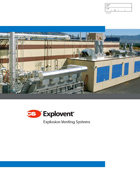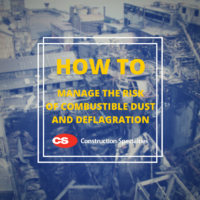 Combustible dust is a big hazard within certain industries, often leading to large explosions, injury and death. A United States Chemical and Safety Board investigation found that 281 dust-related incidents killed 119 workers and injured 718 between 1980 and 2005.
Combustible dust is a big hazard within certain industries, often leading to large explosions, injury and death. A United States Chemical and Safety Board investigation found that 281 dust-related incidents killed 119 workers and injured 718 between 1980 and 2005.
As recently as 2010, a fire and subsequent dust explosion killed three workers at a metal recycling facility in West Virginia. According to experts, a metal blender used for processing metal malfunctioned, causing a spark which ignited some of the powdered metal within the blender. This flash fire spread, causing other combustible dust within the facility to explode. This is known as a deflagration.
Deflagration (Lat: de + flagrare, “to burn down”) is a term describing subsonic combustion propagating through heat transfer; hot burning material heats the next layer of cold material and ignites it. Most “fire” found in daily life, from flames to explosions, is deflagration. Deflagration is different from detonation, which propagates supersonically through shock waves. Source
Standards and Legislation
UK & Europe – HSE & ATEX
According to the HSE “The Dangerous Substances and Explosive Atmospheres Regulations 2002 (DSEAR) place duties on employers to eliminate or control the risks from explosive atmospheres in the workplace. A summary of those requirements can be found below.”
Across Europe there are two European Directives for controlling explosive atmospheres that you should be aware of:
- Directive 99/92/EC (also known as ‘ATEX 137’ or the ‘ATEX Workplace Directive’) on minimum requirements for improving the health and safety protection of workers potentially at risk from explosive atmospheres.
- Directive 94/9/EC (also known as ‘ATEX 95’ or ‘the ATEX Equipment Directive’) on the approximation of the laws of Members States concerning equipment and protective systems intended for use in potentially explosive atmospheres.
Global – NFPA 652
NFPA 652: Standard on the Fundamentals of Combustible Dust created by the National Fire Protection Association, a not-for-profit organisation who have created a host of documents, standards and recommendations to help building owners protect their staff and their buildings.
NFPA 652 states that ‘a facility owner or operator is accountable for the safety of the building and its occupants when the potential for combustible dust is present.’ NFPA 652 outlines 4 key areas of responsibility that have to be addressed and managed:
- Detect the “combustibility and explosibility hazards of materials”
- Identify and evaluate fire, flash fire and explosion hazards
- Manage the hazards
- Train affected individuals about the hazards
Managing the Risk of Deflagration
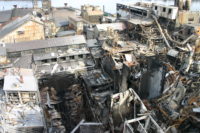 Deflagrations and dust explosions are particularly prevalent in the woodworking, metalworking, plastics processing, chemicals, paper or paint manufacturing, agriculture, food and fodder industries, Energy and Recycling plants.
Deflagrations and dust explosions are particularly prevalent in the woodworking, metalworking, plastics processing, chemicals, paper or paint manufacturing, agriculture, food and fodder industries, Energy and Recycling plants.
When a pressure build-up occurs within the building, it puts stress on the building fabric, and increases the risk of deflagration, which leads to damage and destruction. To manage this effectively and prevent loss of life, you need to be able to vent the pressure before an incident occurs.
Pressure relief solutions are precisely calibrated to vent pressure when it reaches a certain level, thereby protecting a building and its occupants.
However, many pressure relief solutions, such as blow out panels are considered an ‘expendable’ component, meaning once a deflagration has occurred the panels have to be replaced. But there are solutions out there that are not only resettable, but also testable, ensuring ongoing protection and safety. Within Europe devices like this have to comply with ATEX 95 (Directive 94/9/EC) mentioned earlier.
Introducing CS Explovent®
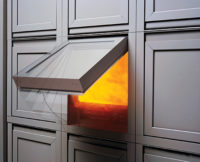
CS Explovent Deflagration Protection System
Explovent® wall panels are designed to be the weakest part of the external structure.
As the explosion vent experiences pressure rise, it opens quickly allowing the rapidly expanding, heated gasses to be released to the outside, thereby diffusing a potential explosion.
Available in two panel options, Explovent® wall panels keep your facility safe from dangerous overpressures.
Why Explovent® Wall Venting Panels?
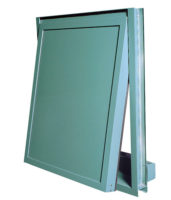 NFPA 68 Compliant (Standard on Explosion Protection by Deflagration Venting)
NFPA 68 Compliant (Standard on Explosion Protection by Deflagration Venting)- ATEX compliant and CE marked
- Lightweight, low inertia panels for quick venting
- Field testable via non-destructive means
- Precisely pressure calibrated at the factory
- Unique hinge system & resettable latch
- Smooth surfaces reduce dust accumulation
- Hold open devices protects from implosion
- Rigorously tested to ensure safety & compliance
Should an event occur, damage is limited because the explosion has been vented – and any downtime owing to building damage is minimised.
For more information on how CS Explovent® can protect your facility, please download our brochure and get in touch:
- Phone: +44 (0)1296 652800
- Email: sales@c-sgroup.co.uk
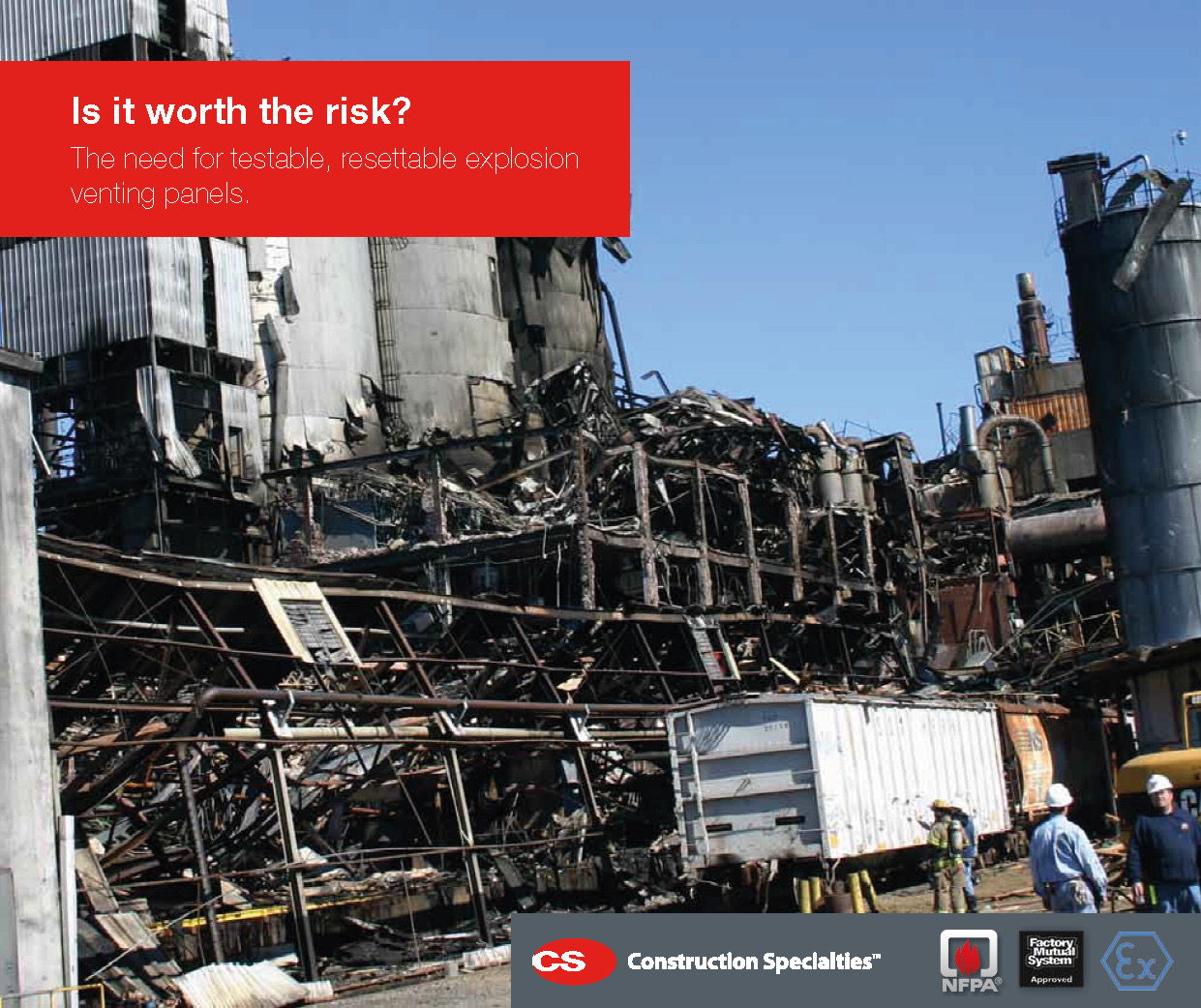
Free Guide to Explosion Venting Panels
Learn why testable, resettable explosion venting panels are essential
Further Reading
- ATEX: Guidelines on the application of Directive 94/9/EC
- ATEX: Workplace Directive 1999/92/EC
- HSE: Safe Handling of combustible dusts: Precautions against explosions
- NFPA 61: Standard for the Prevention of Fires and Dust Explosions in Agricultural and Food Processing Facilities
- NFPA 484: Standard for Combustible Metals
- NFPA: 654 Standard for the Prevention of Fire and Dust Explosions from the Manufacturing, Processing, and Handling of Combustible Particulate Solids
- NFPA 655: Standard for the Prevention of Sulfur Fires and Explosions
- NFPA 664: Standard for the prevention of Fires and Explosions in Wood processing and Woodworking Facilities
